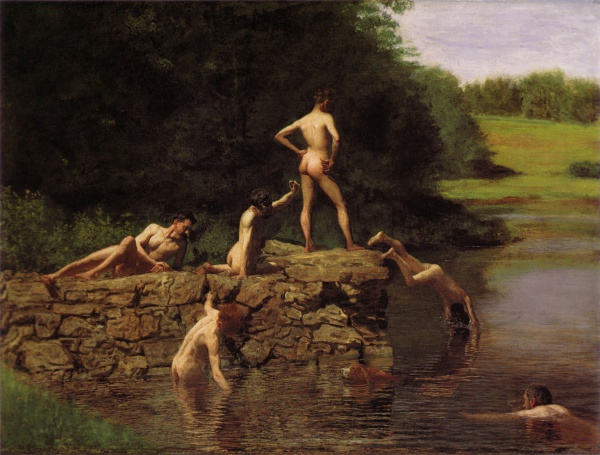Facts About The Swimming Hole
"The Swimming Hole" is a renowned painting by American artist Thomas Eakins, created between 1884 and 1885. This masterpiece is housed at the Amon Carter Museum of American Art in Fort Worth, Texas. The painting features six men swimming nude in a lake and is celebrated for its exceptional depiction of the human form. Eakins, known for his extraordinary skill in rendering the human figure, used this piece to showcase his expertise.
In this painting, Eakins captures a moment of men enjoying a swim, reflecting a time when swimming naked was fairly common, despite the general prudishness of Victorian society regarding nudity. This portrayal of male bathers in an outdoor setting was groundbreaking for American art and has been noted for its subtle homoerotic undertones.
The composition of the painting is designed in a pyramidal shape, guiding the viewer's eye through the various figures and their poses. Eakins meticulously detailed each individual, allowing scholars to identify them, including a self-portrait of Eakins himself. The artwork blends classical ideals of beauty with a modern twist, incorporating elements from ancient themes and contemporary life.
Before completing the final painting, Eakins conducted several studies, including oil sketches and photographs. The piece stirred controversy upon its debut, and Edward Hornor Coates eventually rejected it for being too provocative. Eakins even resigned from the Pennsylvania Academy of the Fine Arts in 1886, partly due to his use of nudity in his work.
Over the years, "The Swimming Hole" has undergone several restoration efforts to maintain its condition. The painting has been part of various exhibitions and collections before finding a permanent home in Fort Worth.
Interpretations of "The Swimming Hole" vary. Some view it as a simple, platonic representation of the male nude in nature, while others perceive homoerotic elements. The painting has been likened to the works of Walt Whitman and has influenced many American realist artists.

 Canada
Canada